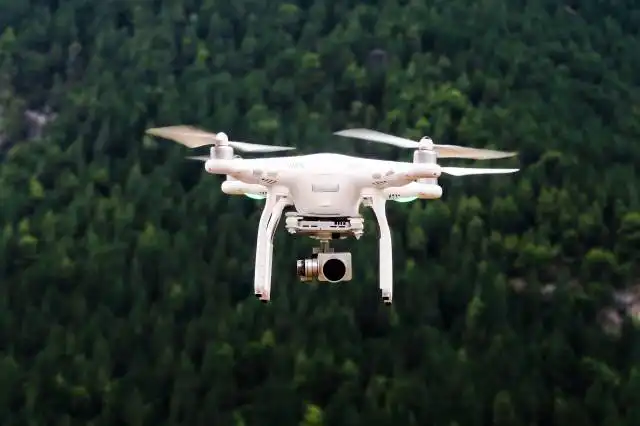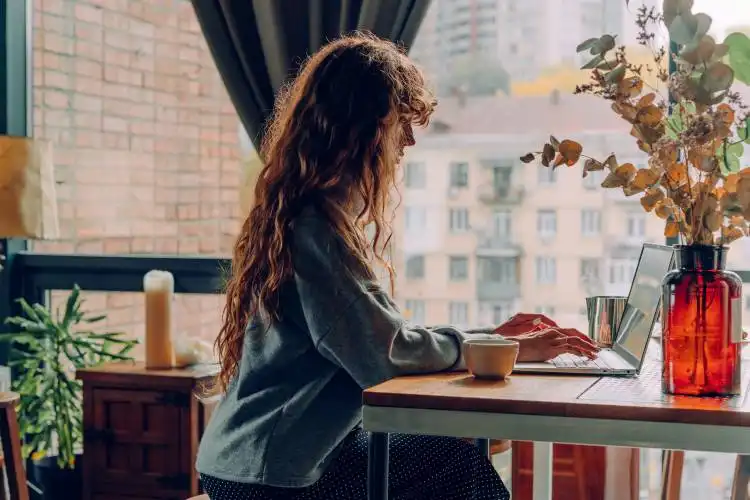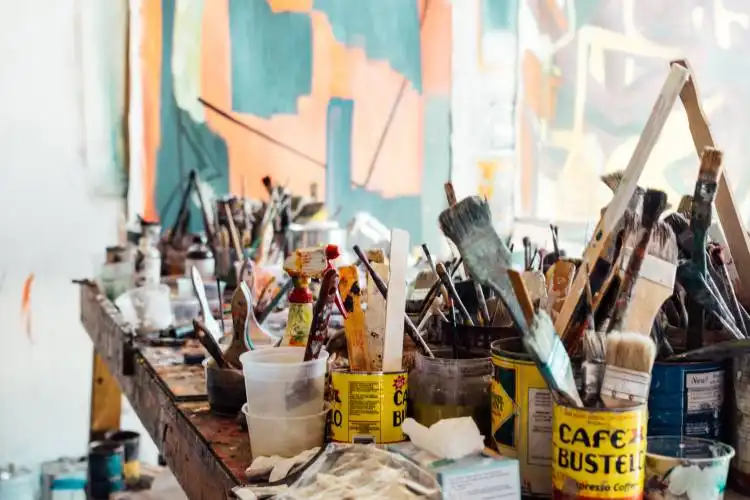Start a Fashion Photography Business
Creating Visual Narratives in the Splendid World of Fashion Photography
| Updated


FASHION PHOTOGRAPHY BUSINESS
Fashion Photography Business is like clutching a fanciful mirror that reflects the art of the apparel world. It's not just about pointing and shooting a camera; it's about transforming everyday couture into indelible impressions, particularly sizzling those high fashion ramps and studios with your visual narratives. Stride into this business to juggle light, angle, and creativity to weave a distinct brand identity. Essentially, this business focuses on capturing and promoting designs in the fashion industry through creative, striking imagery.
Jump to Business Plan
RELATED BUSINESS IDEAS
Browse ALL Design & Creative Enterprises Business Ideas
Discover Your Perfect Domain
Unlock the door to your online success with our hand-picked selection of premium domain names. Whether you're starting a new venture or rebranding an existing one, the right domain can set the tone for your digital presence. Browse through our curated list, each with its unique potential to enhance your brand's visibility and credibility.
FASHION PHOTOGRAPHY MINI BUSINESS PLAN
This a quick reality check to help you identify the strengths and weaknesses of your business concept before you dive in.
Business Idea: Fashion Photography Business
Expected Percent Margin:
- Gross Margin: 70-80%
- Net Profit Margin: 20-30%
Earnings Expectations:
- Daily Earnings: $300 - $600
- Weekly Earnings: $1,500 - $3,000
- Monthly Earnings: $6,000 - $12,000
- Annual Earnings: $72,000 - $144,000
Actions to Hit These Numbers:
Equipment & Studio:
- Initial Investment: High-quality camera equipment, lighting, editing software (around $10,000).
- Studio Setup: Rent a studio or use a converted space at home.
Marketing & Client Acquisition:
- Portfolio Building: Create a solid portfolio of your best works.
- Networking: Collaborate with local fashion designers, models, makeup artists, and join fashion industry events.
- Digital & Social Media Marketing: Regularly post your works on your website and social platforms popular with your target demographics.
Skills Improvement:
- Training: Keep enhancing your technical photography skills.
- Creativity: Regularly experiment with new concepts, themes, and trends in fashion photography.
Pricing & Packages:
- Pricing Strategy: Competitive pricing based on the local market and complexity of the photography session.
- Packages: Offer variety of services including portfolio shots, look books, fashion show coverages or commercial fashion photography.
Operational Costs:
- Equipment Maintenance: Regular equipment upkeep for optimal performance.
- Editing Time: Account for the hours spent on editing photos after the shoot.
Remember, these are approximate figures and will vary greatly based on your geographical location, the specific niche you cater to in the fashion industry, and how your services are perceived by your clients. Always refer to a financial advisor for a more accurate forecast.
NOT WHAT YOU HAD IN MIND? Here are more ideas



Browse ALL Design & Creative Enterprises Business Ideas
Grab Your Business Website Name
Before you get caught up in the whirlwind of setting up your business, invest in a domain name. It's a small but significant step that lays the foundation for your brand and makes it easier for customers to find and trust you. Just like you wouldn't build a house without securing the land first, don't build a business without securing your domain name.
"Why? Can't that wait?" Here's why it shouldn't
Step 1: Determining if the Business is Right for You
Breakdown of Startup Expenses
Before starting a fashion photography business, it is important to understand the costs associated with getting the business off the ground. This includes the cost of equipment such as cameras, lenses, lighting, and other accessories. Additionally, the cost of renting a studio space or other location for shooting, as well as the cost of marketing materials such as business cards, flyers, and website design, should be taken into account. It is also important to consider the cost of insurance to protect the business from potential liabilities.
Breakdown of Ongoing Expenses
Once the business is up and running, there are ongoing expenses to consider. These include the cost of maintaining the equipment, such as regular cleaning and repairs, as well as the cost of replacing equipment as it becomes outdated. Additionally, the cost of studio rental or other shooting locations should be taken into account. It is also important to consider the cost of marketing materials such as business cards, flyers, and website design, as well as the cost of insurance to protect the business from potential liabilities.
Examples of Ways to Make Money
Fashion photography businesses can make money in a variety of ways. One way is to charge clients for services such as shooting, editing, and retouching photos. Additionally, businesses can make money by selling prints or digital copies of their photos. Businesses can also make money by licensing their photos to be used in magazines, websites, and other publications. Finally, businesses can make money by teaching classes or workshops on fashion photography.
Step 2: Naming the Business
Choosing a name for your fashion photography business is an important step. It should be memorable, easy to pronounce, and easy to spell. It should also be unique and reflect the type of photography you will be doing. Consider using a combination of words that reflect the type of photography you will be doing. For example, if you specialize in high-end fashion photography, you could combine words like “luxury” and “style” to create a unique name. Additionally, you should make sure that the name you choose is not already being used by someone else. You can do this by searching for the name on the internet or checking with the local government to make sure it is not already registered.
Register the Name
Once you have chosen a name for your fashion photography business, you will need to register it with the local government. This will ensure that no one else can use the same name and that you have exclusive rights to it. You will also need to register the name with the IRS and obtain a business license. This will help you to stay in compliance with local laws and regulations. Additionally, registering the name will help you to protect your brand and ensure that you are the only one who can use it.
Step 3: Creating a Business Plan
Outlining Goals
Creating a business plan is an important step in starting a fashion photography business. It is important to outline the goals of the business in the plan. These goals should include the type of photography services that will be offered, the target market, and the desired financial outcome of the business. Additionally, the plan should include the timeline for achieving these goals. This will help to ensure that the business is on track to reach its goals.
Establishing a Budget
The business plan should also include a budget. This budget should include the startup costs, such as equipment and software, as well as ongoing expenses, such as rent and marketing. It is important to be realistic when creating the budget, and to factor in unexpected expenses. Additionally, the budget should include a plan for how the business will generate revenue. This could include charging for services, selling prints, or offering workshops.
Identifying Target Market
The business plan should also include a plan for identifying the target market. This should include an analysis of the local market, as well as an understanding of the types of clients that will be served. Additionally, the plan should include a strategy for reaching potential clients, such as through advertising or networking. It is important to understand the needs of the target market in order to create a successful business.
Step 4: Acquiring Equipment
List of Necessary Equipment
When starting a fashion photography business, there are certain pieces of equipment that are necessary for success. These include a camera, lenses, lighting equipment, backdrops, and props. Depending on the type of photography being done, additional equipment may be needed, such as a tripod, reflectors, and filters. It is important to research the type of equipment needed and the cost associated with it.
Tips on Finding Affordable Equipment
When starting a fashion photography business, it is important to find the best deals on equipment. One way to do this is to shop around online and compare prices. Additionally, many camera stores offer used equipment at discounted prices. It is also possible to rent equipment for short-term projects. This can be a great way to save money while still getting the necessary equipment. Additionally, many photographers have found success in bartering with other photographers for equipment. This is a great way to get the necessary equipment without having to spend money.
Step 5: Finding Clients
Tips on Networking
Networking is a key component to finding clients for a fashion photography business. It is important to create a network of contacts that can help spread the word about the business. This can include attending events, joining local photography clubs, and connecting with other photographers. Additionally, it is important to create a portfolio of work that can be shared with potential clients. This portfolio should include a variety of styles and techniques to demonstrate the photographer’s range.
Examples of Advertising Strategies
Once the network of contacts has been established, it is important to advertise the business. This can include creating a website and social media accounts to showcase the work. Additionally, it is important to create a blog to share tips and advice related to fashion photography. This can help to draw in potential clients. Additionally, advertising in local publications and on online job boards can be beneficial. Finally, it is important to create promotional materials such as business cards and flyers to distribute to potential clients.
Step 6: Setting Up a Studio
Tips on Choosing a Location
When starting a fashion photography business, one of the most important decisions is where to set up the studio. It is important to choose a location that is convenient for clients to access, has enough space to accommodate the desired setup, and is affordable. Consider factors such as the size of the studio, the amount of natural light available, and the cost of renting or purchasing the space. It is also important to consider the local laws and regulations that may affect the business.
Examples of Studio Setups
When setting up a fashion photography studio, there are a variety of options to choose from. A traditional studio setup may include a backdrop, lighting equipment, and props. A home studio can be set up with minimal equipment and can be used for smaller shoots. A mobile studio can be set up in various locations and can be used for on-location shoots. Additionally, there are a variety of digital tools and software that can be used to create a virtual studio. Consider the type of shoots that will be done and the type of equipment needed to create the desired look.
Step 7: Building a Portfolio
Step 7: Building a Portfolio is an important step in starting a fashion photography business. It is important to have a portfolio of work to show potential clients and to help you stand out from the competition.
Tips on Building a Portfolio
When building a portfolio, it is important to include a variety of different types of fashion photography. This could include editorial, commercial, and lifestyle photography. It is also important to include a variety of different lighting techniques, angles, and poses. Additionally, it is important to have a portfolio that is cohesive and that reflects your style and aesthetic.
Examples of Portfolio Pieces
Examples of portfolio pieces could include fashion editorials, lookbooks, and campaigns. Additionally, it is important to include a variety of different models, clothing, and locations. It is also important to include a variety of different lighting techniques, angles, and poses. Additionally, it is important to include a variety of different post-production techniques, such as retouching and color grading. Finally, it is important to include a variety of different types of fashion photography, such as editorial, commercial, and lifestyle photography.
Step 8: Pricing Your Services
When it comes to pricing your services, it is important to understand the market and the competition. You should also have a good understanding of the costs associated with running your business. It is important to set prices that are competitive and that will allow you to make a profit.
Tips on Setting Prices
When setting prices for your services, consider the following tips:
Research the market and competition – It is important to understand the market and the competition. Research what other photographers are charging for their services and use this information to help you set your own prices.
Consider the cost of running your business – You should also consider the costs associated with running your business. This includes the cost of equipment, supplies, and any other expenses associated with running a business.
Set prices that are competitive – It is important to set prices that are competitive and that will allow you to make a profit. You don’t want to set prices that are too low, as this could lead to a loss of profits.
Consider offering discounts or packages – Consider offering discounts or packages to attract more customers. This could include offering discounts for bulk orders or packages that include multiple services.
Examples of Pricing Strategies
When it comes to pricing your services, there are a few different strategies you can use. Here are some examples of pricing strategies you can use:
Hourly Rate – You can charge an hourly rate for your services. This is a good option if you are just starting out and don’t have a lot of experience.
Flat Fee – You can also charge a flat fee for your services. This is a good option if you are experienced and can offer a variety of services.
Package Deals – You can also offer package deals to attract more customers. This could include offering discounts for bulk orders or packages that include multiple services.
Value-Based Pricing – You can also use value-based pricing, which is based on the value of the services you provide. This is a good option if you are experienced and can offer a variety of services.
Step 9: Staying Up to Date
Starting a fashion photography business requires staying up to date with the latest trends and technology. This is especially important for photographers who want to stay competitive in the industry. It is important to stay informed of the latest fashion trends, as well as the latest photography equipment and techniques.
Tips on Keeping Up with Trends
One way to stay up to date with the latest trends is to follow fashion magazines and blogs. This will help keep photographers informed of the latest trends in fashion photography. Additionally, attending fashion shows and events is another great way to stay informed. Photographers should also keep up with the latest photography equipment and techniques. This could include attending photography workshops and seminars, or researching online.
Examples of Resources to Stay Informed
Fashion magazines such as Vogue and Elle are great resources for staying up to date with the latest trends in fashion photography. Additionally, attending fashion shows and events is another great way to stay informed. Photographers should also keep up with the latest photography equipment and techniques. This could include attending photography workshops and seminars, or researching online. There are also a number of online resources available for photographers, such as blogs, forums, and websites. These resources can provide photographers with the latest news and information about the industry. Additionally, photographers should also network with other photographers to stay informed of the latest trends and techniques.
EXPLORE MORE CATEGORIES
Browse ALL Business Idea Categories
TAKE THE NEXT STEPS










